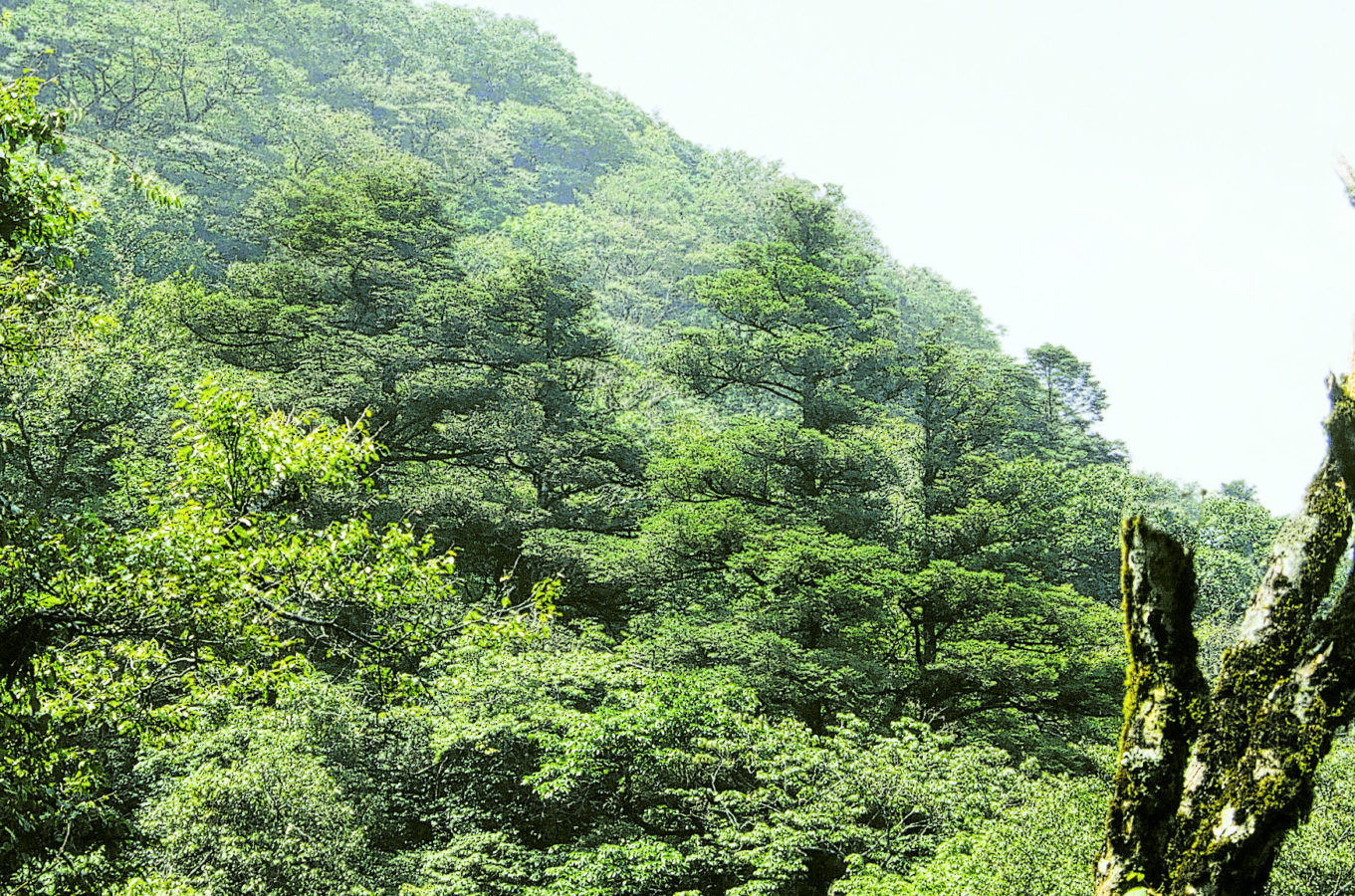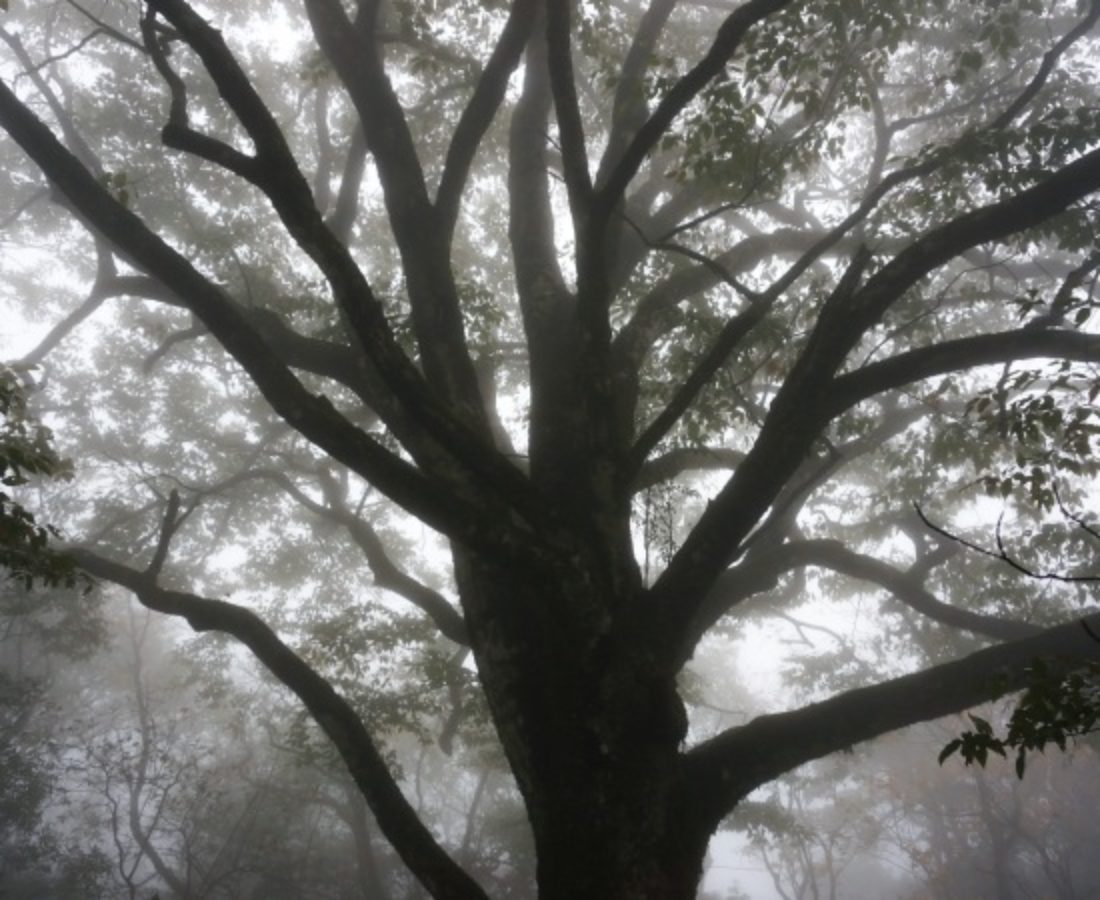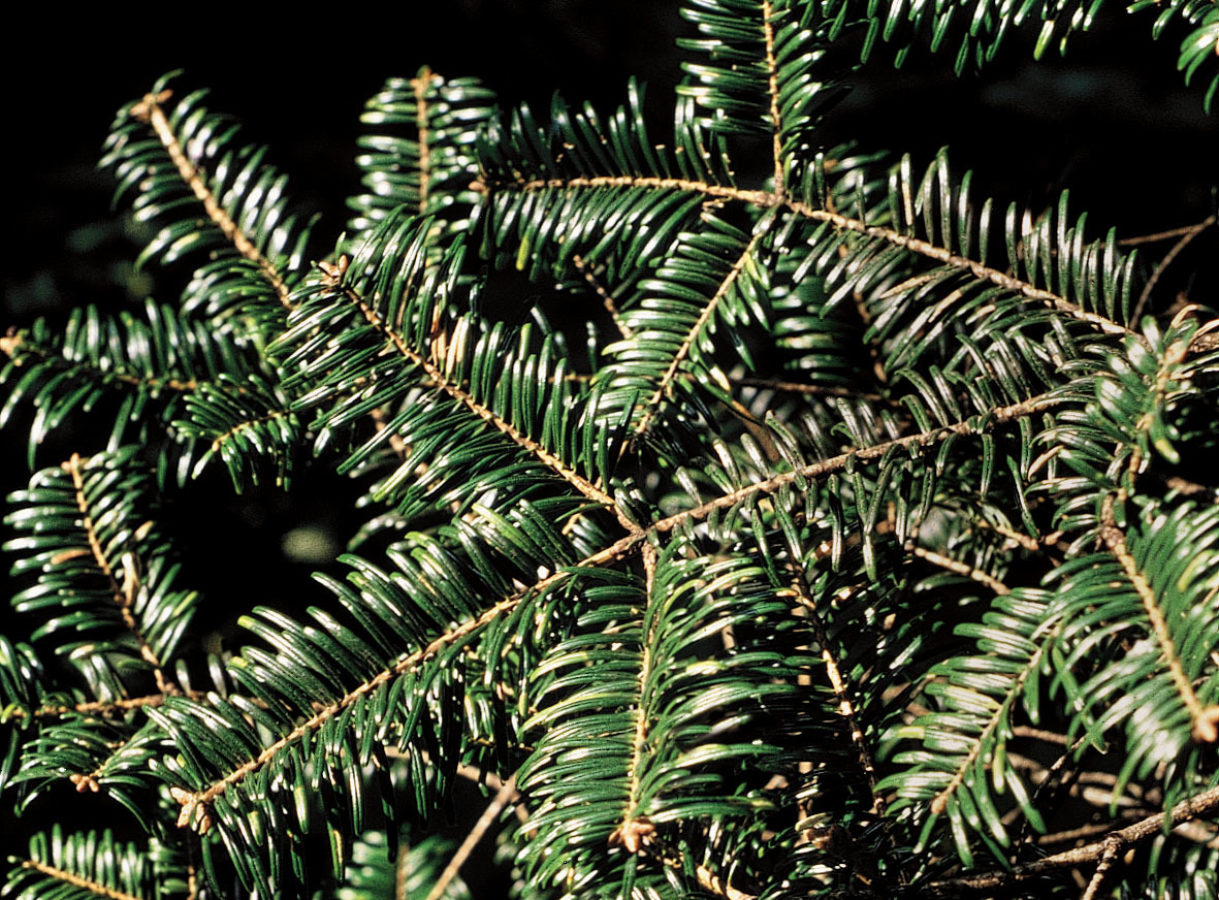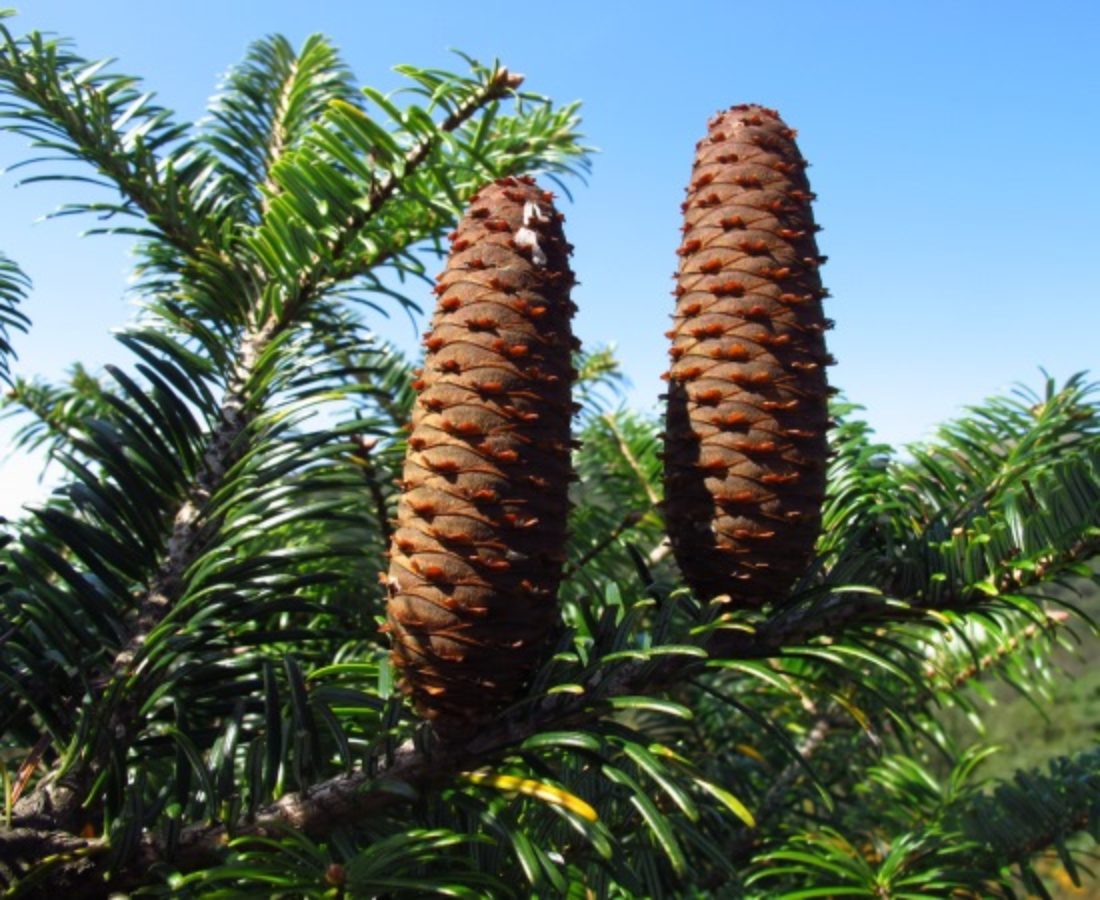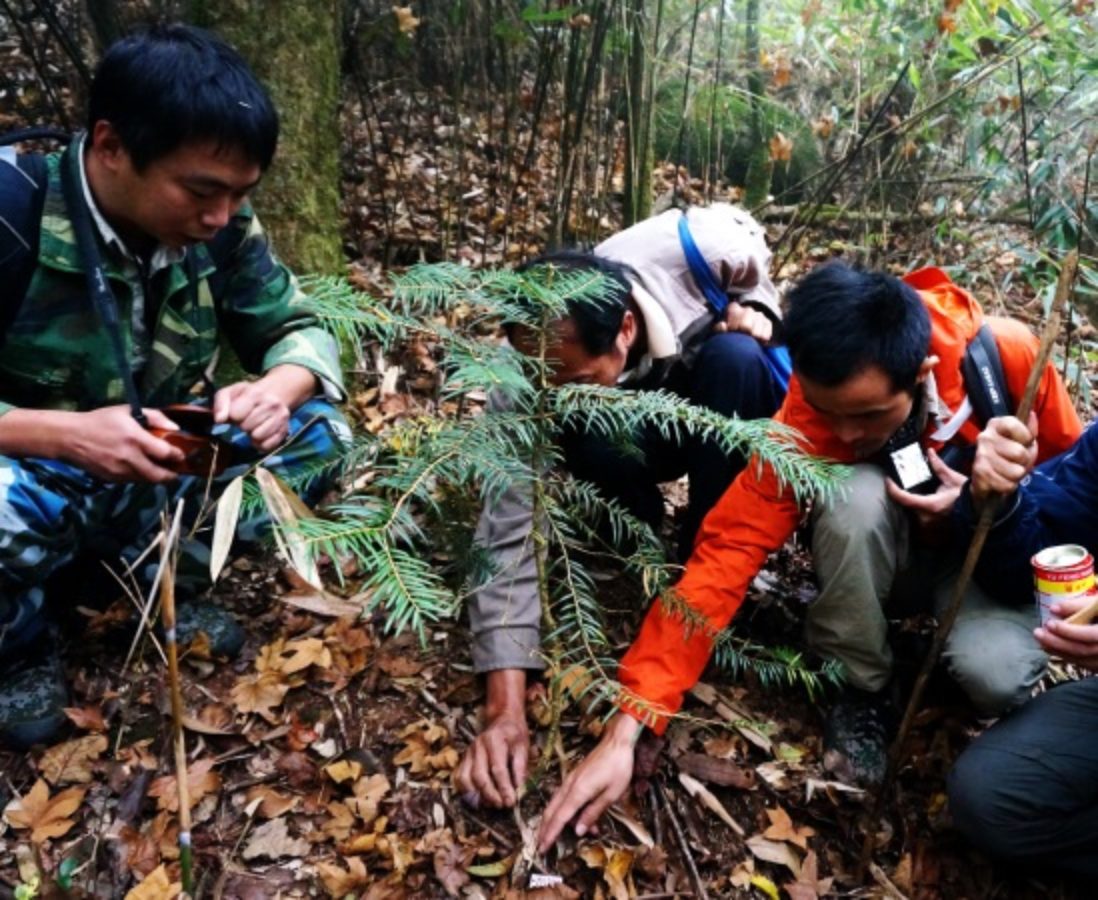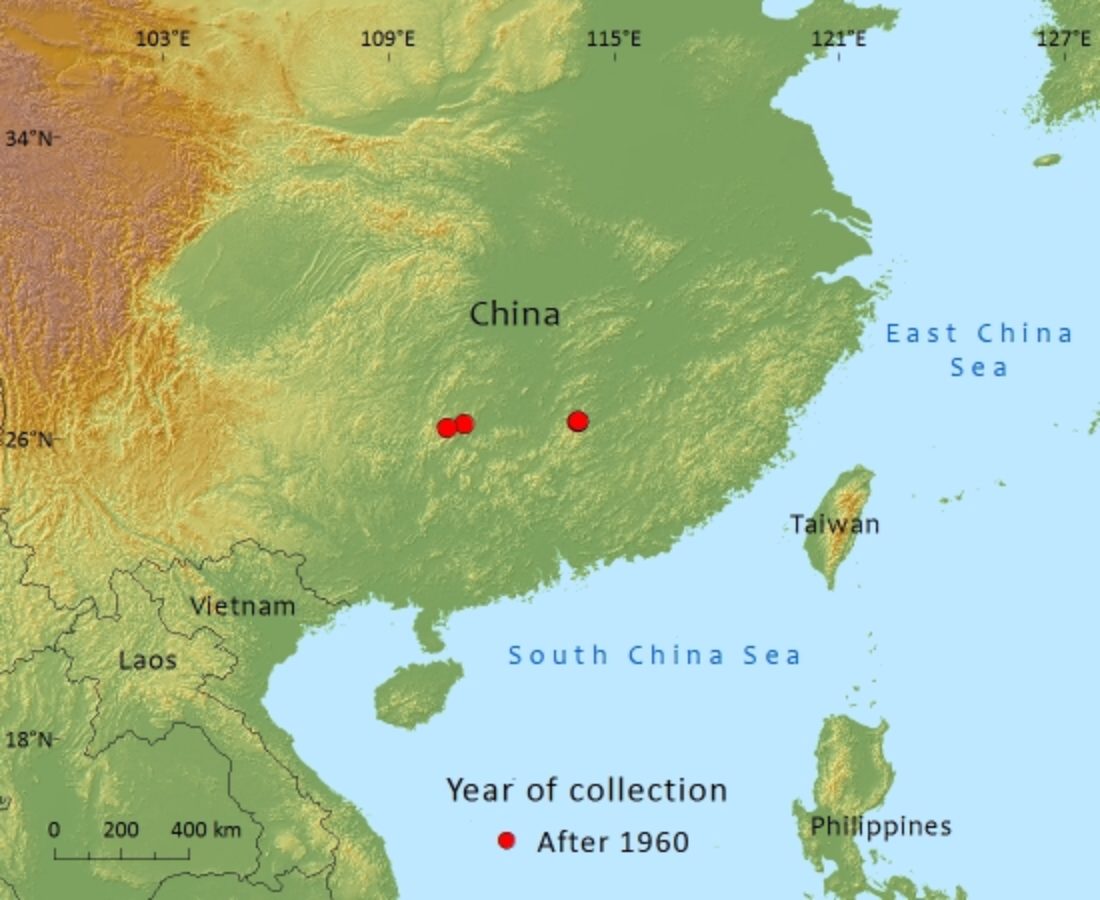Pinaceae
Abies ziyuanensis
Endemic to south-east China where the present-day threats are landslides and overgrazing by sheep and cattle.
References and further reading
- Farjon, A. (2010). A Handbook of the World's Conifers. Koninklijke Brill, Leiden.
- Farjon, A. & Rushforth, K. (1989). A classification of Abies Miller (Pinaceae). Notes from the Royal Botanic Garden Edinburgh 46(1): 59-79.
- Farjon, A., Li, J.-y., Li, N., Li, Y., Carter, G., Katsuki, T., Liao, W., Luscombe, D, Qin, H.-n., Rao, L.-b., Rushforth, K., Yang, Y., Yu, S., Xiang, Q. & Zhang, D 2011. Abies ziyuanensis. In: IUCN 2012. IUCN Red List of Threatened Species. Version 2012.2. . Downloaded on 05 April 2013.
- Fu, L., Lu, Y. & Mo, S. (1980). The genus Abies discovered for the first time in Guangxi and Hunan. Acta Phytotaxonomica Sinica 18(2): 205.
- Nguyen, Q.H., V. Price, X. Wei, J. Yang 2014. New populations of threatened trees found in China. Oryx 49(1):13-16.
- Xiang, Q.P., Xiang, Q.Y., Guo, Y.Y. & Zhang, X.C. (2009). Phylogeny of Abies (Pinaceae) inferred from nrITS sequence data. Taxon 58(1): 141-152.
